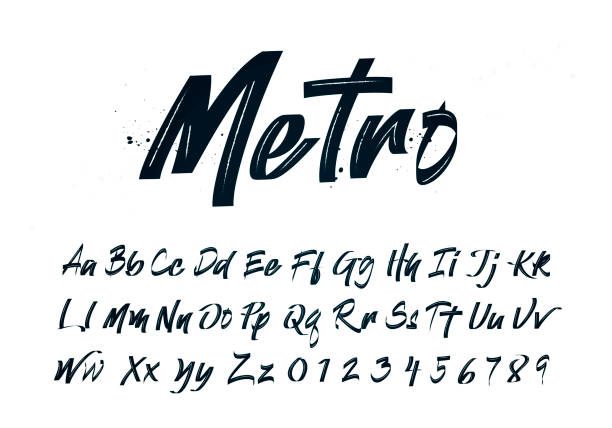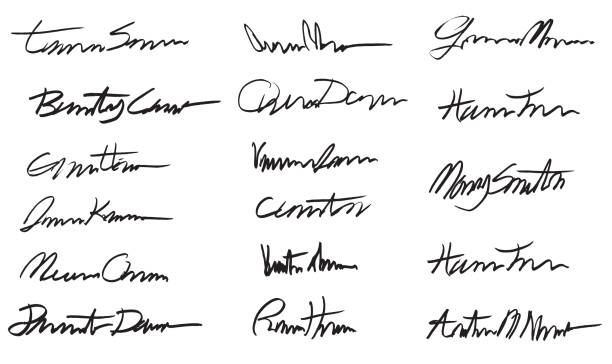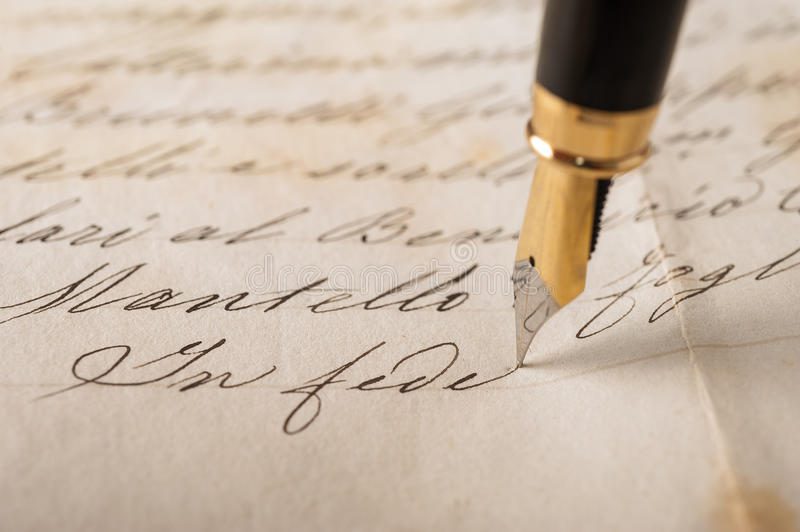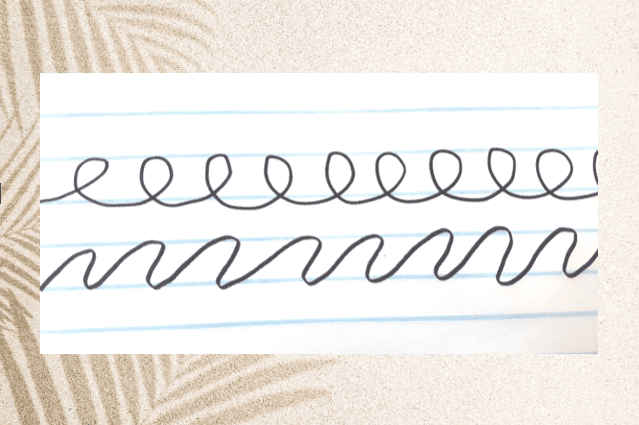
How To Get A Masculine Handwriting
Graphology dictates that handwriting styles differ widely based on a combination of personal traits and sex characteristics. Male and female handwriting are frequently very easy to distinguish from one another.
Though most of these assumptions about handwriting based on gender are largely predicated on speculation and prevalence, numerous studies suggest a definitive correlation between gender and handwriting.
In the general public, female handwriting is characterized by precise and neat handwriting, with all the letters having the same approximate size and style. In contrast, masculine penmanship tends to be more untidy. This is not to say that any male person will have messy, horrible handwriting; biology simply governs that masculine people tend to be less attentive to writing with neat lines.
Differences Between Male And Female Handwriting
In a scientific study performed by John R. Beech from the University of Leicester, a series of experimental activities were carried out where participants would view differing samples of handwriting and guess the gender of the author based on their writing style.
Approximately 66% of the masculine handwriting and female handwriting was identified correctly. So, in general, people can accurately identify the gender of the writer. During the analysis of the results, various mechanisms were established to explain why male and female handwriting is so distinct.
One such mechanism was based on the physical differences between male and female bodies. For example, males tend to have larger hands than females, with their second finger being slightly shorter than the fourth finger. These physical traits could explain the dissimilarity in writing style.
Thes judges were also required to rate each handwriting according to the quality of the writing. The standard of both male and female handwriting averaged around three, which indicated that female handwriting isn’t necessarily characterized by neat handwriting more than masculine handwriting. However, the two are definitely distinct from one another.
Another distinguishing mechanism is that females have prenatal hormones that result in a more feminine handwriting, which contains more curved letters instead of straight lines.
Moreover, graphologists claim that they can determine much more than just the gender of a person by looking at their handwriting. According to these specialists, the way a person holds the pen and approaches writing a note reveals their psychological state, health, and social situation. As an example, a person who is an introvert and is afraid of close proximity and intimacy with others will likely tend to leave larger spaces between letters and words alike.
That said, graphology is still considered a pseudoscience as there is no definitive proof that handwriting is a direct result of occurrences in someone’s personal life. Many accomplished scientists state that graphology is by no means a valid and indicative science but is instead a sympathetic approach to analyzing a person’s psychological state.
Apart from all the skepticism surrounding graphology, there is still some truth to the matter, which explains how gender was accurately identified in the scientific study. Feminine handwriting is stereotypically characterized as being neater and cleaner, while masculine handwriting is thought to be messy and disorganized. These displays could result from individuals conforming to what is expected of them by subconsciously applying masculine or feminine traits to something as menial as handwriting.
As men are generally less determined to present themselves as neat, their handwriting is a result of the careless nature stereotypically associated with masculinity. Although this is all just speculation, it is very likely and possible that people write a certain way to satisfy society’s expectations and conventions.

How To Get A Masculine Handwriting
Whether you’re taking notes or writing a handwritten letter like the gentleman you are, nothing is more aesthetically pleasing than good handwriting. If you wish to alter your feminine handwriting because it does not reflect your masculine identity, here are a few measures to follow to achieve the handwriting that suits you:
Step 1: Analyse Your Current Handwriting
The first step to improvement is identifying the areas that need improvement. So, to achieve your desired handwriting, evaluate your writing style as it is now.
Position yourself comfortably in front of a desk with a pen and paper. Be sure to sit upright and hold the pen as your normally would. To start with, you can practice using a sentence that contains as many vowels and consonants as possible to view how you write each letter.
The sentence, «The quick brown fox jumps over the lazy dog,» contains all the letters of the alphabet, making it a suitable practice sentence. Alternatively, you can simply write a note that you frequently would.
After having written, evaluate each letter and word individually, circling the elements you are less than satisfied with. Then, ask yourself questions, like if your letters are slanted, if you from letters consistently throughout the note, and if you consider some letters more masculine than others.
Step 2: Find An Appropriate Example
You may not know what you would like your personal handwriting to look like yet. Exploring some handwriting on the internet would benefit you to better understand your desired outcome.
Search for «masculine handwriting» and decide which visuals you find legible. Note that you will likely alter the handwriting styles as your penmanship evolves, but it’s good to have a basic outline of what you want to achieve. Although the following examples are primarily computer-generated fonts, they still display a general technique that you might find helpful.


After careful evaluation, select the handwriting example you wish to recreate. Start by tracing the letters with your pen. Once you become comfortable with the technique, you can teach yourself to write from sight.
Keep practicing each character with keen attention to detail. If you make an error, simply start again and repeat each letter until you are satisfied with the result.
Step 3: Practice Makes Perfect
After seeing which areas you would like to improve upon, practice writing the letters and words of interest repeatedly. In school, it is usually taught to use the Palmer method. The Palmer method instructs students to write with the muscles in the arm rather than those in the hand. It may seem strange and unnatural at first, but it could go a long way in improving your handwriting.
Practice is critical in perfecting the art of penmanship. Choose a few words that contain the vowels or consonants you would like to alter, and repeatedly write them underneath each other, keeping in mind that you want to find a constant style. Try to replicate the letters that you are happy with.
For example, let’s use the words «We love to write.»


Note the size difference between your upper and lowercase letters. Writers are typically unique in the size of letters and spaces they implement in handwritten pieces. Girls generally leave larger spaces between words and keep to the same sizes, whether they write lower case or upper case letters. To achieve more masculine handwriting, you should try keeping the spaces and sizes of letters small, except if you feel it makes your writing less readable.
There really is no right or wrong way to write. It all depends on your personal preference and technique as a writer.
Cursive Handwriting
Cursive writing used to be a much bigger deal than it is now. Nevertheless, we can’t deny the beautiful art of cursive. Maybe we associate it with romanticism because of the movies we all know too well where a handwritten letter is opened to reveal an elegant cursive script.
Whatever the reason, Cursive handwriting elevates the quality of any handwriting, whether it is feminine or masculine.
You may be reluctant to revisit cursive penmanship since you most likely abandoned that specific skill early in your school career. In spite of the increased amount of practice that goes into perfecting cursive writing, it is undoubtedly a timeless style.

How to Improve Your Cursive Writing
- Buy A Handwriting Course Book
The best way to consistently improve your handwriting is by completing daily activities and exercises designed by specialists to enhance your capabilities. One such course is American Cursive Handwriting, written by Micheal Sull.
This coursebook provides a practical system of handwriting using the Palmer method. What’s great about this course is that it applies to any pen or pencil you like to use. It will guide you to perfect your handwriting in menial activities like journaling and writing personal letters.
- Hold Your Pen Right
Your penmanship can only reach its full potential if you hold your pen correctly. Place your pen or pencil between your thumb and index finger, letting it rest on your middle finger. Keep your grip loosely to avoid your hand getting tired, along with putting too much pressure on the paper. This will result in a light and flowing style.
- Practice Moving Exercises
Moving exercises will help you keep your technique airy and loose. You can train your hand to form the necessary curls and flairs to make it easier to achieve a flawless cursive style when you start writing.
Look at the following example to comprehend what I mean by moving exercises.

Use Your Whole Hand For Capital Letters, And Just Your Fingers For Lowercase Letters
Most people are used to using only their fingers when they’re writing. When you construct an extensive handwritten note or letter, this results in cramps and aches. Instead, focus on using your arm when you write uppercase letters and only your fingers for lowercase letters.
Practice a few examples of letters in their uppercase and lowercase forms to get comfortable with your hand movements.

I sincerely hope this article was both interesting and helpful in guiding you to achieve masculine handwriting that aligns with your personal gender identity.



